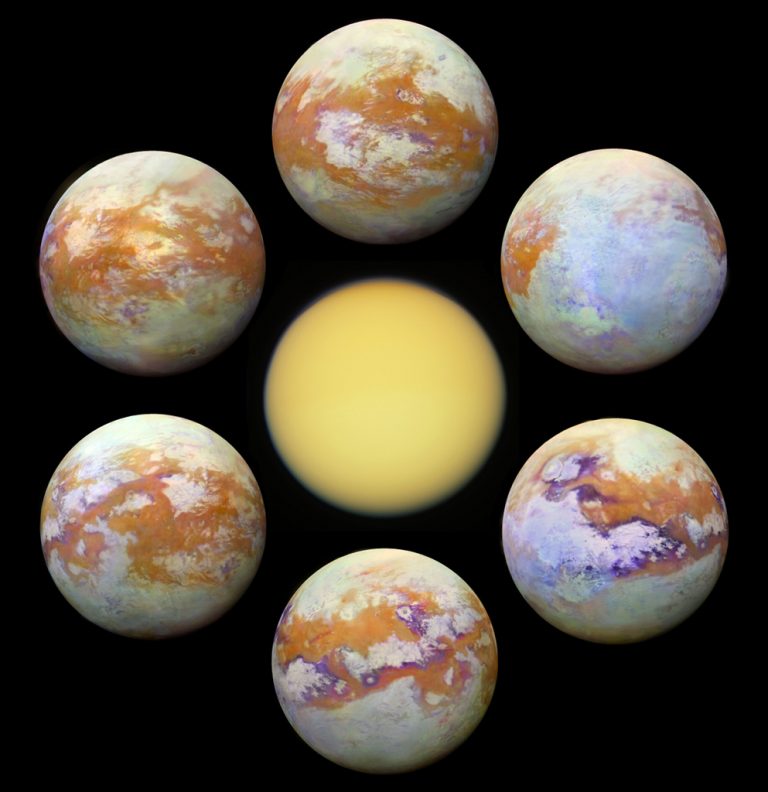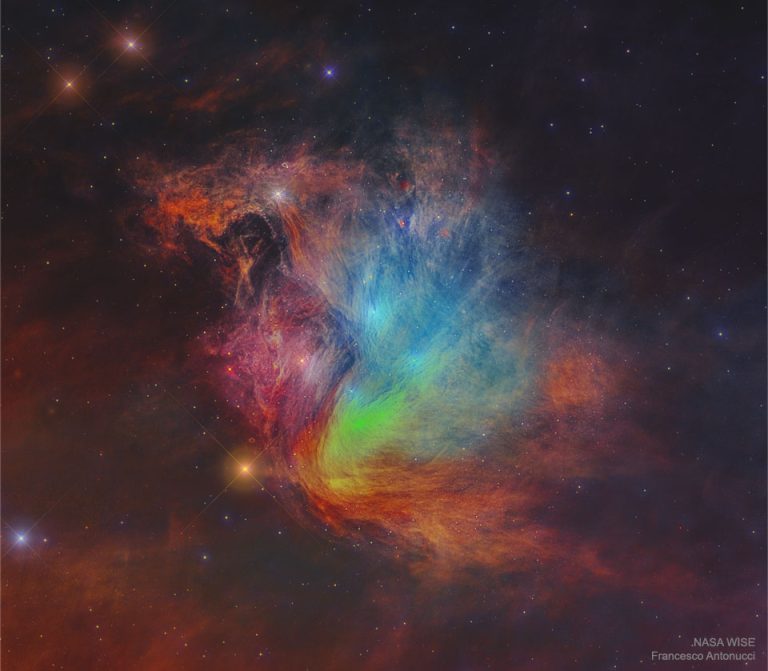2023年10月6日 The Once and Future Stars of Andromeda Image Credit: NASA, NSF, NOAJ, Hubble, Subaru, Mayall, DSS, Spitzer; Processing & Copyright: Robert Gendler & Russell Croman Explanation: This picture of Andromeda shows not only where stars are now, but where stars will be. The big, beautiful Andromeda Galaxy, M31, is a spiral galaxy a mere 2.5 million light-years away. Image data from space-based and ground-based observatories have been combined here to produce this intriguing composite view of Andromeda at wavelengths both inside and outside normally visible light. The visible light shows where M31’s stars are now, highlighted in white and blue hues and imaged by the Hubble, Subaru, and Mayall telescopes. The infrared light shows where M31’s future stars will soon form, highlighted in orange…










